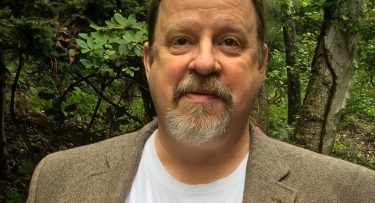Mercy Professor Peter Minorsky, Ph.D. Quoted in Science News on Importance of Diversity in Textbooks

Mercy College Biology Professor Peter Minorsky, Ph.D. was recently quoted in a Science News article — which was then picked up by The Washington Post — entitled “College Biology Textbooks Still Portray a World of White Scientists.” As a co-author of the textbook “Campbell Biology,” now in its 12th edition, he shared his informed perspective on diversity in college biology textbooks.
The article describes a study conducted by researchers at Auburn University that found introductory college biology textbooks are becoming more likely over time to feature diverse scientists. However, the rate of this diversification is not happening fast enough to match the number of diverse students who study biology in college. In fact, if diversification continues at its current slow pace, it will take another 500 years for mentions of Black scientists in textbooks to accurately reflect the number of Black college biology students.
“Whether intentionally or not, textbooks instill readers with ideas about who can contribute to science, technology, engineering or mathematical (STEM) fields,” the researchers explain in their article published in Proceedings of the Royal Society B, a biological research journal. “Therefore, textbooks represent an important opportunity to shape students' existing stereotypes of who scientists are, have been and can be.” Student perceptions of who can be a scientist influences their sense of belonging, which affects their performance and retention in the field.
In the article, Minorsky explained that textbooks must balance historical science and modern science: “If it’s all historical, then it's not up to date. If it’s all cutting edge, there’s no context.” Because textbooks are essentially a summary of the literature, he says that they have to trace the major findings, how these were discovered, and what eventually led to our current understanding. “But at the same time, you also want to create the excitement of modern science, so it's also important to include some cutting-edge research,” he said.
Originally brought on as a ghost author for the 5th edition of the textbook before becoming a contributing author and now a co-author, Minorsky explained the strategy for writing and revising the textbook: “We try to blend the old and the new rather than compartmentalize them. Some textbooks, for example, rely on little sidebars that talk about recent developments or the historical past. We try not to use those. We try to blend everything together into a coherent and interesting story.”
The textbook includes a note at the end of the first chapter asserting that the underrepresentation of diverse views hampers the progress of science. In addition, each section includes an interview with a modern scientist representing a diverse background. . Minorsky explained that the original author of the textbook, Neil Campbell, included interviews with eminent scientists. “As we progressed, however, we realized that there were a lack of role models for students from groups that are underrepresented in science. So we made the conscious decision to include interviews with a lot of people from these underrepresented groups. In general, their stories are a lot more compelling than those of us whose parents paid for our education or didn't face any discrimination.”
To read the Science News article “College Biology Textbooks Still Portray a World of White Scientists,” click here.
